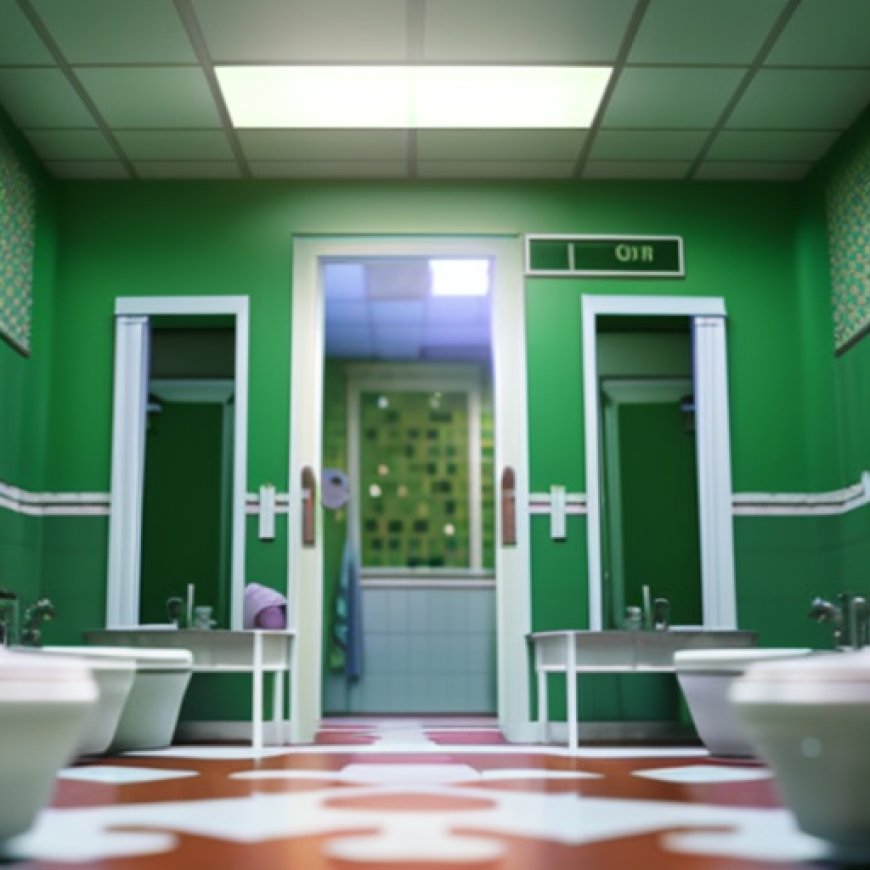Windows cut into middle school gender-inclusive bathrooms


Parents in South Western School District Call Out School Board Over Gender-Inclusive Bathrooms
On Wednesday, parents in the South Western School District are taking to social media to call out their school board after pictures surfaced of construction on gender-inclusive bathrooms. South Western School District residents are calling out the school board for restroom restorations, which parents argue is a violation of equality policies.
Windows Installed in Gender-Inclusive Restrooms
The school district installed windows making it possible to view the interior of gender-inclusive restrooms. Jennifer Holahan, a district parent, says her son showed her pictures of construction in the middle school. “It just raised a ton of concerns for me: privacy concerns, safety concerns, concerns for the kids who need those facilities. I feel like this is a deterrent to keep them from using them.”
Holahan believes the construction is the furthering of a school board political agenda to target LGBTQ+ students. “I can understand needing to have supervision over middle and high school students, especially in the bathrooms. I was a teenager once; I know it’s a tough spot. But I also think windows aren’t a solution. I think if it was a real issue, it wouldn’t just be gender-inclusive restrooms,” Holahan said.
Statement from South Western’s School Board President
South Western’s school board president issued a statement on the issue: “As Southwestern School District engages in renovating multiuser restroom facilities, it has an interest in opening a view into the non-private area of those facilities in similar fashion to what has existed for years in our elementary schools. In making the area outside of stalls more viewable, we are better able to monitor for a multitude of prohibited activities such as any possible vaping, drug use, bullying or absenteeism.
“Our students should not consider the space outside of our stalls as private within the multiuser restrooms. Our current policy states ‘In any facility in a District school that is for use based on Gender Identity, in which a person may be in a state of undress in the presence of others, school personnel shall provide private changing areas for use.’ Areas between our stalls and sinks in multiuser restrooms are not private changing areas under that policy.
“The current gender identity bathrooms are undergoing construction to add additional privacy to the stalls from within the restroom and there is no view into those private stall spaces from outside of the restrooms.
“Thank you for the opportunity to respond to the claims being made that we are allowing view into private changing areas.”
Statement from Randall Wenger, Chief Counsel of the Independence Law Center
Randall Wenger, chief counsel of the Independence Law Center issued a statement on the window installation. “Independence Law Center supports the goal of parents and school districts to see that everyone is treated with respect, and that the privacy rights of all students are protected. Recently, false rumors have been circulating in news outlets about the Independence Law Center. It was not our recommendation to create a line of sight into a restroom that lacks adequate privacy.
“It’s the position of the Independence Law Center that privacy in multi-user facilities starts at the door of the room, not the door of stalls, which have gaps and spaces all around. In such facilities, there should be no direct line of sight into multi-user bathrooms from public areas like hallways.
If facility improvements are made to convert facilities to the higher level of privacy that one expects from the opposite sex, like the bathrooms on airplanes, the room can open to a public area which allows the district to accomplish goals such as monitoring a multitude of prohibited activities such as any possible vaping, drug use, bullying, or absenteeism.”
SDGs, Targets, and Indicators Analysis
1. Which SDGs are addressed or connected to the issues highlighted in the article?
- SDG 5: Gender Equality
- SDG 10: Reduced Inequalities
The issues highlighted in the article are related to gender equality and the rights of LGBTQ+ students, which are addressed by SDG 5. The article also mentions the violation of equality policies, which connects to SDG 10, which aims to reduce inequalities.
2. What specific targets under those SDGs can be identified based on the article’s content?
- SDG 5.1: End all forms of discrimination against all women and girls everywhere
- SDG 10.2: By 2030, empower and promote the social, economic, and political inclusion of all, irrespective of age, sex, disability, race, ethnicity, origin, religion, or economic or other status
The article highlights the concerns raised by parents regarding discrimination against LGBTQ+ students and the violation of equality policies. These concerns align with the targets of SDG 5.1 and SDG 10.2.
3. Are there any indicators mentioned or implied in the article that can be used to measure progress towards the identified targets?
- Indicator for SDG 5.1: Proportion of women and girls subjected to sexual harassment, by setting
- Indicator for SDG 10.2: Proportion of people who feel safe walking alone around the area they live
The article mentions concerns about privacy and safety in gender-inclusive restrooms, which can be indicators of the proportion of women, girls, and LGBTQ+ individuals subjected to harassment or feeling unsafe in certain settings. These indicators can be used to measure progress towards SDG 5.1 and SDG 10.2.
SDGs, Targets, and Indicators Table
| SDGs | Targets | Indicators |
|---|---|---|
| SDG 5: Gender Equality | 5.1: End all forms of discrimination against all women and girls everywhere | Proportion of women and girls subjected to sexual harassment, by setting |
| SDG 10: Reduced Inequalities | 10.2: By 2030, empower and promote the social, economic, and political inclusion of all, irrespective of age, sex, disability, race, ethnicity, origin, religion, or economic or other status | Proportion of people who feel safe walking alone around the area they live |
Source: wgal.com








